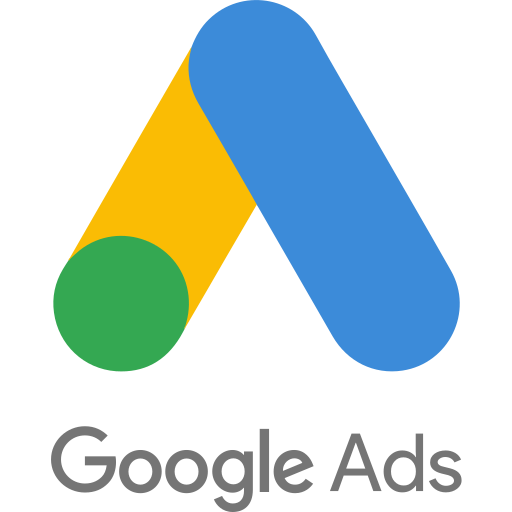Google Ads Digital Marketing Executive In Tirur , Malappuram , Kerala
what is Google Ads
Google Ads is an online advertising platform developed by Google. It allows businesses to create and manage ads that appear on Google’s search engine and other Google properties, such as YouTube, Gmail, and various websites within the Google Display Network. Google Ads Digital Marketing Executive In Tirur , Malappuram , Kerala provides advanced targeting options that allow advertisers to reach specific audiences based on factors such as location, demographics, interests, keywords, and browsing behavior.
Importance of Google ads
- Reach: Google is the most popular search engine in the world, with billions of searches conducted every day. Google Ads allows businesses to reach a massive audience of potential customers who are actively searching for products or services related to their business.
- Targeting: Google Ads provides advanced targeting options that allow advertisers to reach specific audiences based on factors such as location, demographics, interests, keywords, and browsing behavior. This targeting capability helps businesses show their ads to the most relevant audience, increasing the chances of conversion.
- Cost-Effective: With Google Ads, you only pay when someone clicks on your ad (Pay-Per-Click or PPC) or when your ad is displayed a thousand times (Cost-Per-Thousand or CPM). This pay-per-click model ensures that you’re only paying for actual results and allows for precise control over your advertising budget.
- Measurable Results: Google Ads provides detailed analytics and reporting tools that allow businesses to track the performance of their ads in real-time. This includes metrics such as clicks, impressions, conversions, and return on investment (ROI), enabling advertisers to measure the effectiveness of their campaigns and make data-driven decisions to optimize their ad spend.
- Flexibility: Google Ads offers various ad formats and campaign types to suit different business goals and objectives. Whether you want to increase website traffic, generate leads, drive sales, or raise brand awareness, Google Ads provides the flexibility to create campaigns tailored to your specific needs.
- Quick Results: Unlike some forms of traditional advertising that can take weeks or months to yield results, Google Ads can start driving targeted traffic to your website almost immediately after launching a campaign. This makes it an ideal choice for businesses looking to quickly generate leads or sales.
- Competitive Advantage: In today’s digital landscape, where competition is fierce, having a strong online presence is crucial for businesses to stay competitive. Google Ads allows businesses to stand out from the competition by appearing at the top of search results and reaching potential customers at the moment they’re ready to make a purchase decision.
step-by-step guide to set up a Google Ads campaign
1. Sign in to Google Ads
- Go to the Google Ads website (ads.google.com) and sign in using your Google account. If you don’t have one, you’ll need to create it.
2. Create a Campaign
- Click on the “+ New Campaign” button.
3. Choose a Campaign Goal
- Google Ads offers different campaign types based on your goals. Choose one that aligns with your objectives, such as:
- Sales
- Leads
- Website Traffic
- Brand Awareness and Reach
- App Promotion
4. Select a Campaign Type
- Choose the type of campaign you want to run:
- Search: Text ads that appear when people search for keywords on Google.
- Display: Image or text ads that appear on websites within Google’s Display Network.
- Video: Ads that appear on YouTube or across Google’s video partner sites.
- Shopping: Ads that promote your products by showing images and details.
- App: Ads that promote your app across various Google platforms.
5. Configure Campaign Settings
- Set your campaign name.
- Choose your campaign’s geographic targeting (locations where you want your ads to appear).
- Set your budget (how much you want to spend per day).
- Choose your bidding strategy (how you want to pay for your ads).
6. Create Ad Groups
- Ad groups contain a set of ads that target a specific set of keywords or audience.
- Choose relevant keywords for each ad group.
7. Write Your Ads
- Craft compelling ad copy that includes relevant keywords.
- Follow Google Ads policies and guidelines.
- For Search and Shopping campaigns, include headlines, descriptions, and display URLs.
- For Display campaigns, include eye-catching images and engaging ad copy.
8. Set Bids and Budgets
- Decide how much you’re willing to pay for clicks or impressions.
- You can set bids manually or use automated bidding strategies.
9. Review and Launch
- Review your campaign settings, ad groups, ads, and targeting.
- Once everything looks good, click “Save and Continue” or “Launch Campaign.”
10. Monitor and Optimize
- Keep an eye on your campaign’s performance.
- Adjust your bids, targeting, and ad copy based on performance data.
- Use Google Ads’ reporting tools to track key metrics like Click-Through Rate (CTR), Conversion Rate, and Return on Investment (ROI).
11. Experiment and Test
- Test different ad variations, targeting options, and bidding strategies.
- Continuously optimize your campaigns for better results.


